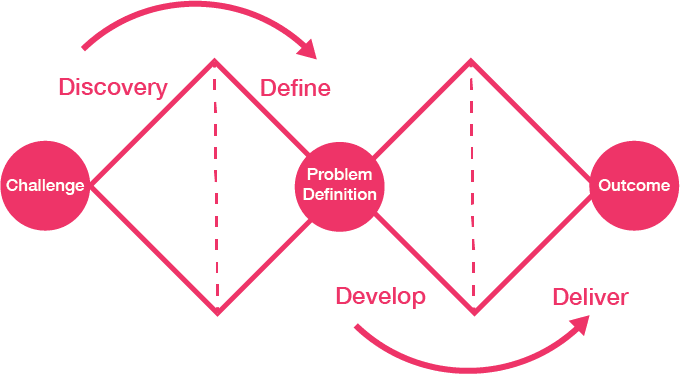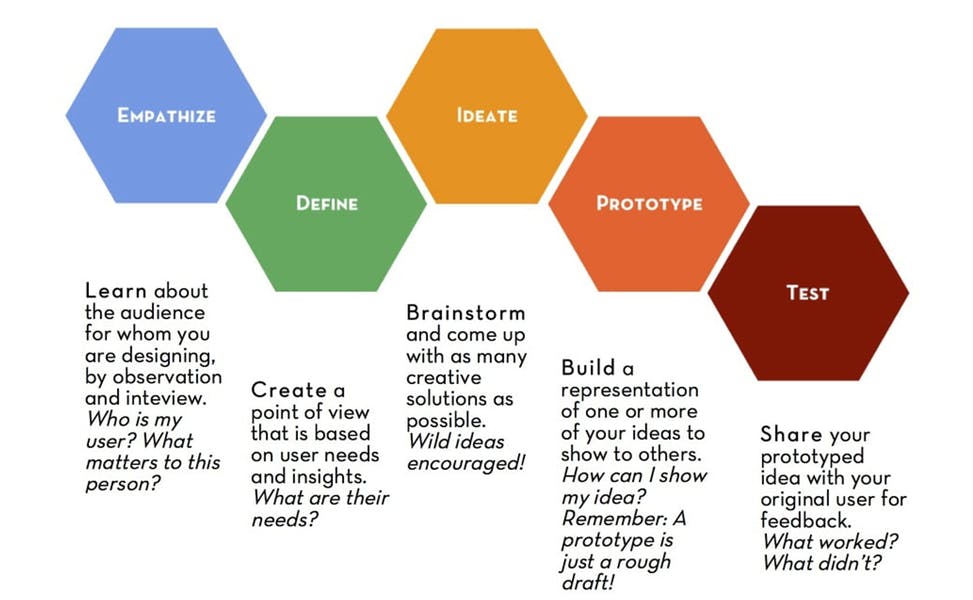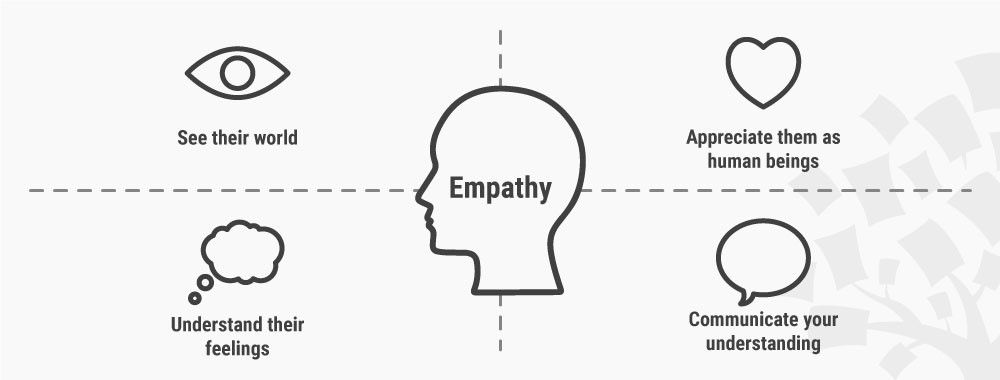Table of contents
Welcome to the second article in the series - "Design thinking". You can read the previous articles on this series from this link.
Design thinking process model
In 2005, Design Council, a British organization, developed a process model called 'Double Diamond' which was divided into four distinct phases such as discover, define, develop and deliver. It schemes the divergent and convergent stages of the design process, showing the different methods of thinking that designers normally use.

In the first diamond, the model starts with building empathy with customers through field research and gathering as much information as possible in the 'discover' phase. This is converged to find the user's behavior such as motivations, and frustrations and builds opportunity areas in the 'define' phase.
In the second diamond, the ideas are built, prototyped and tested in the 'develop' phase and then these are converted into a finalized product/service in the 'deliver' phase.
Brown expanded this model later in 2008 and mentioned that thinking like a designer can transform the way organizations develop products, services and strategies. Deep empathy for people makes observations powerful sources of inspiration. Innovation in design thinking occurs when a perfect balance occurs among the business, technical factors and highly important human factors. This balance is known as the 'sweet spot' in innovation.
Brown stated in 2009 that the best way to start design thinking is to do intensive research with 'empathy' followed by 'ideation' and then rapid 'prototyping'. Prototyping is creating a physical output of a service or product. The same steps can be understood from the below figure,

Prototyping is followed by testing and getting feedback from the customers and again iterating back and forth till the best service or product is achieved. This process allows changing the service faster and helps to build a culture that is ready to adapt as per customer requirements. This process will not help to achieve perfection. Rather this approach helps organizations to have an organized design to understand the exact need of the people rather than forcing a product that was designed in closed rooms.
Phases of design thinking
The different phases of design thinking are,
(i) Empathise Phase -
One can ask the following questions to empathize with the feelings of others,
What makes a person feel?
What are the words the person uses to express his/her feeling?

(ii) Define Phase -
This stage focuses on defining the feeling identified by empathizing with others and drafts the problem statements for which solutions should be identified.
It should be ensured that the defined problem statement should be positive, meaningful and easily achievable.

(iii) Ideate phase -
In this stage, multiple ideas are generated for the problem statement. The following techniques are commonly used for generating ideas,
Mind Mapping, Brainstorming, Inquiry etc

(iv) Prototype phase -
In the prototyping phase, the concept model of the solution is developed.
Based on the needs and situations of the user, an already developed prototype can be improved, altered, re-examined and recreated multiple times.
(v) Test Phase -
In the 'test' stage, innovators ask for feedback about the prototypes that they have developed for the end users.
Testing is one more chance to refine the solutions created and make the overall product better.

And that's a wrap-up. I hope you have learned something from this blog. If it's helpful to you then do like, follow me on Hashnode and Twitter and do subscribe to my Hashnode newsletter so that you don't miss any future posts. Thanks for reading and have a great day!